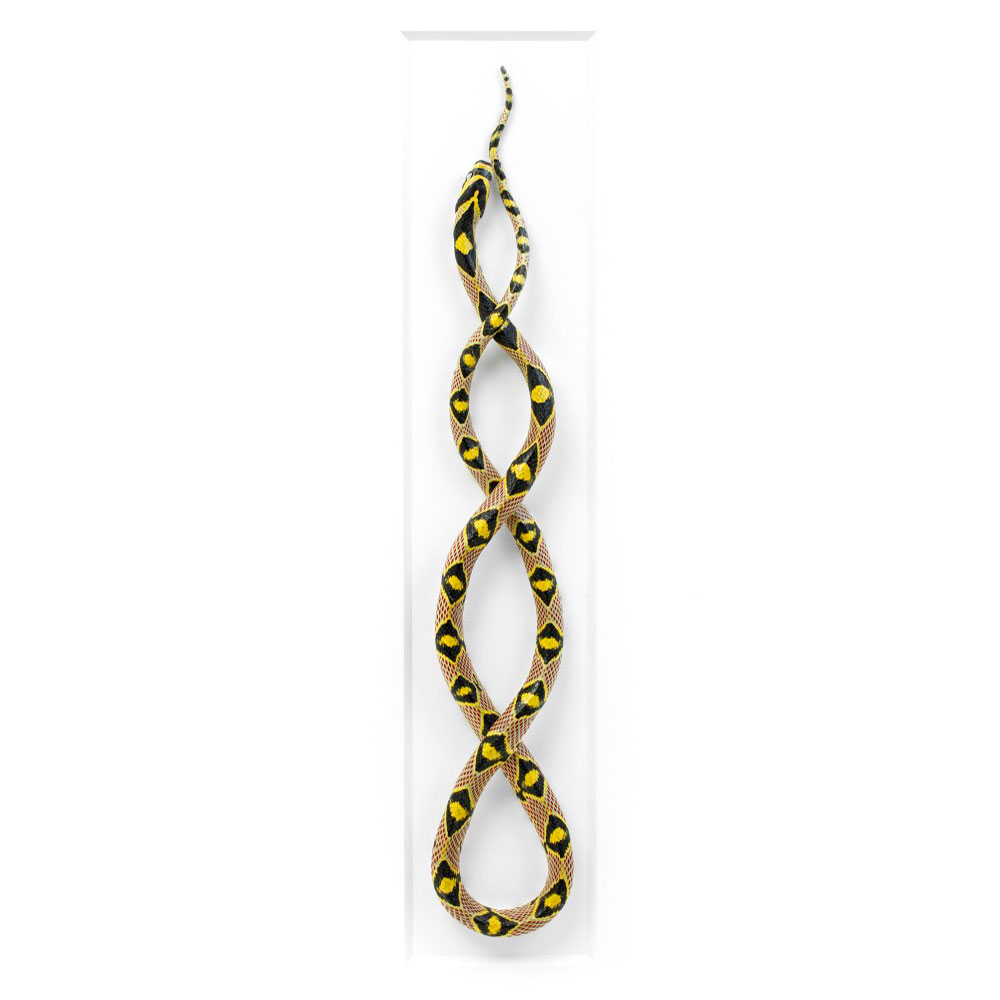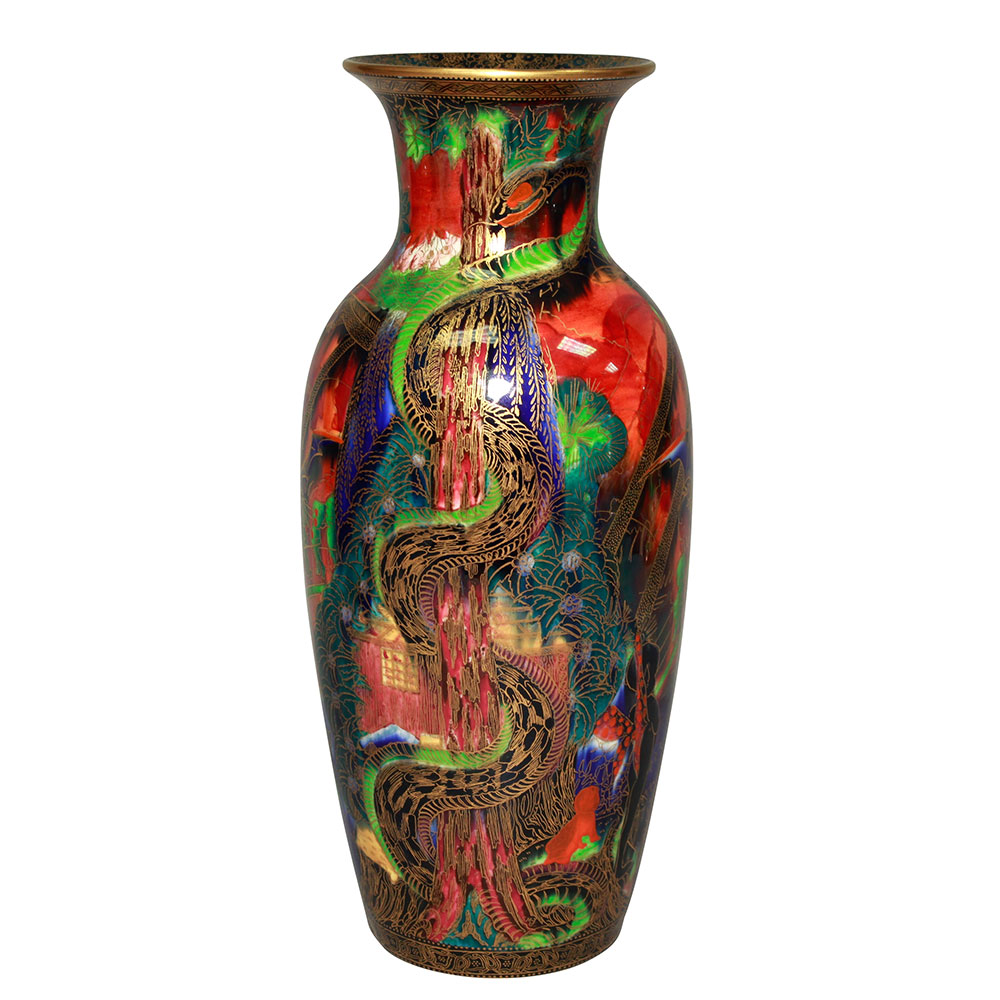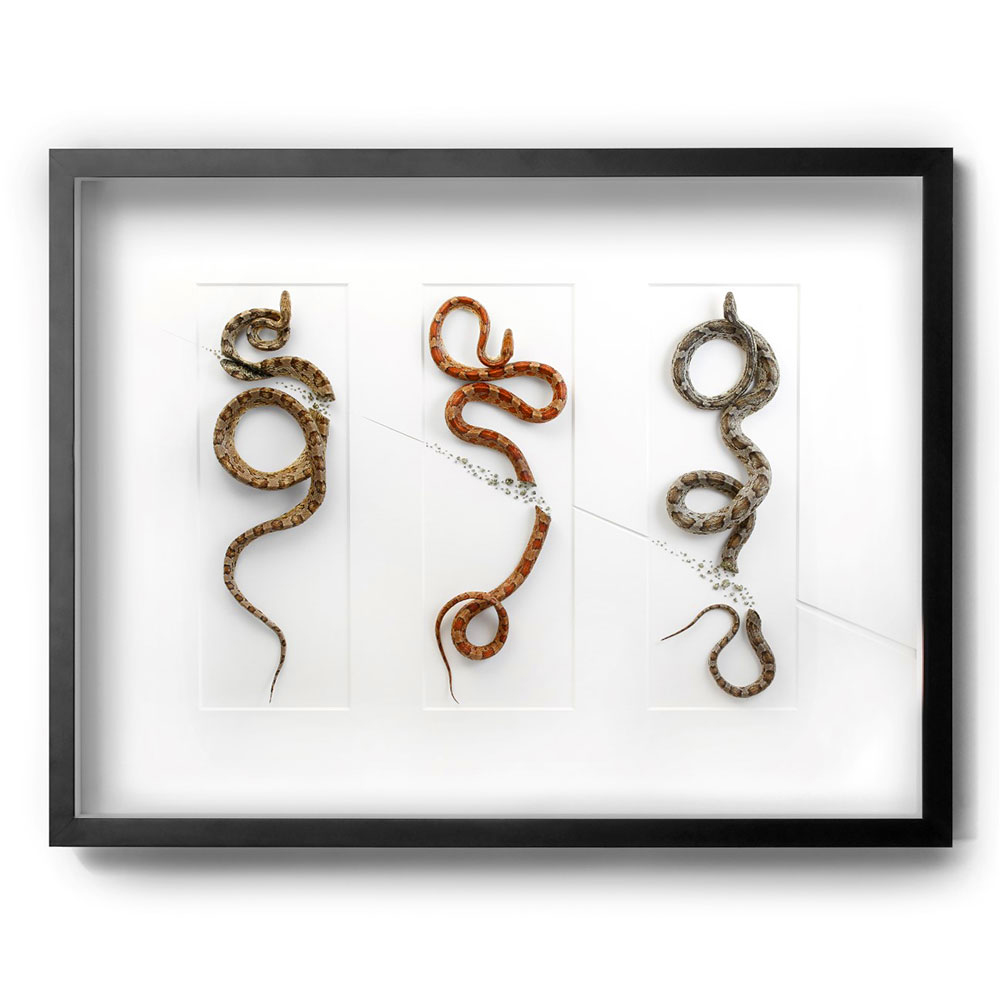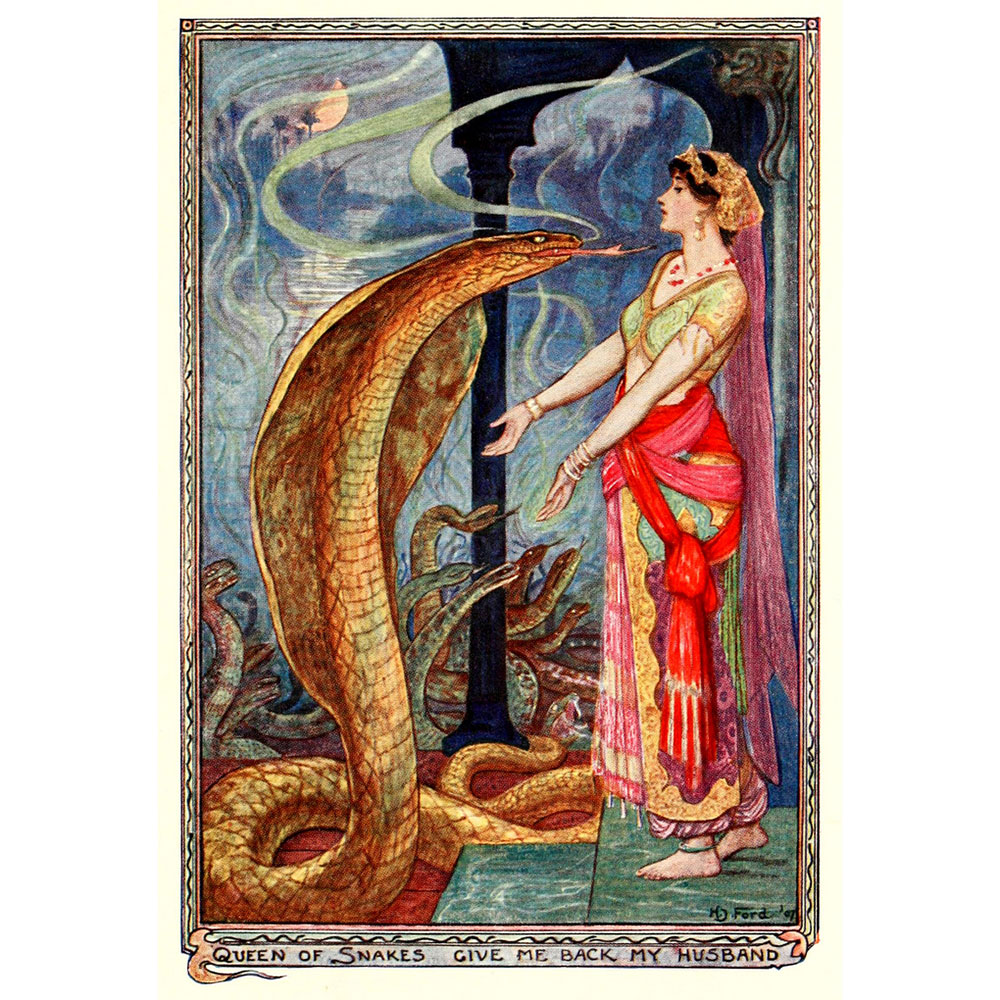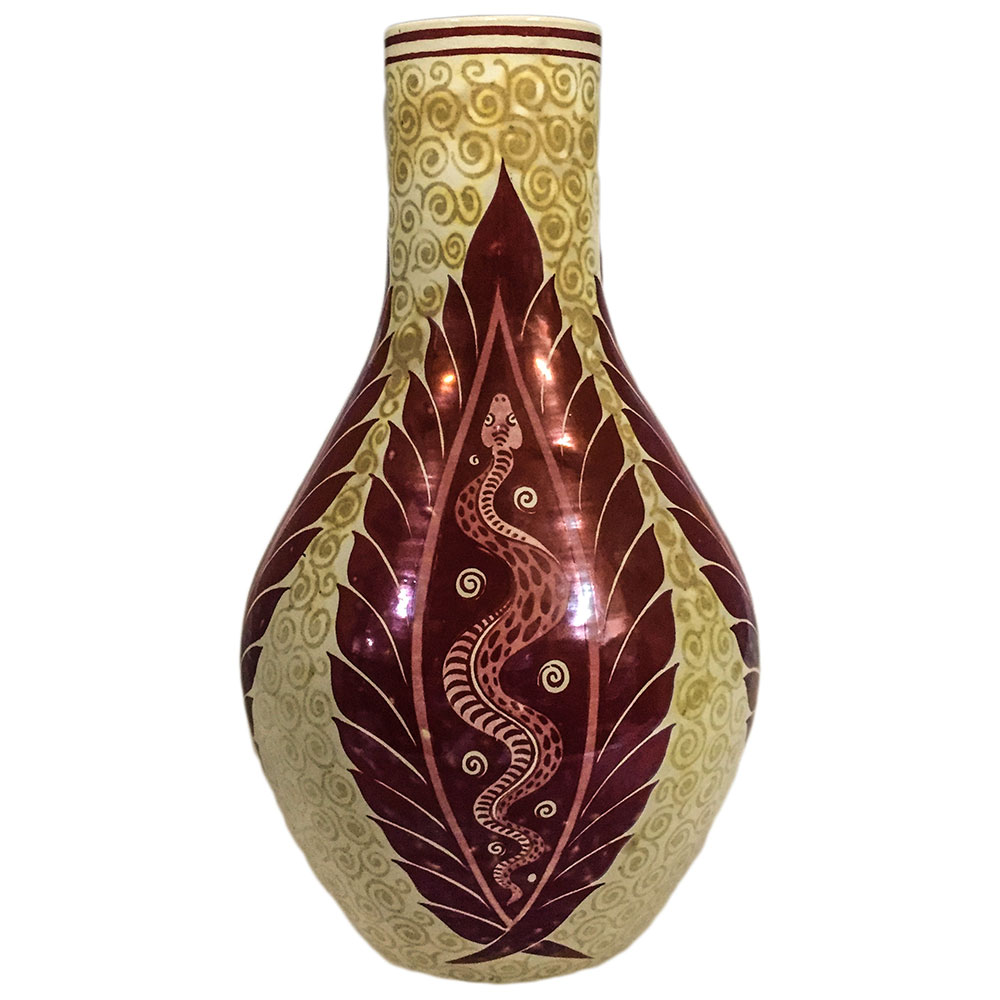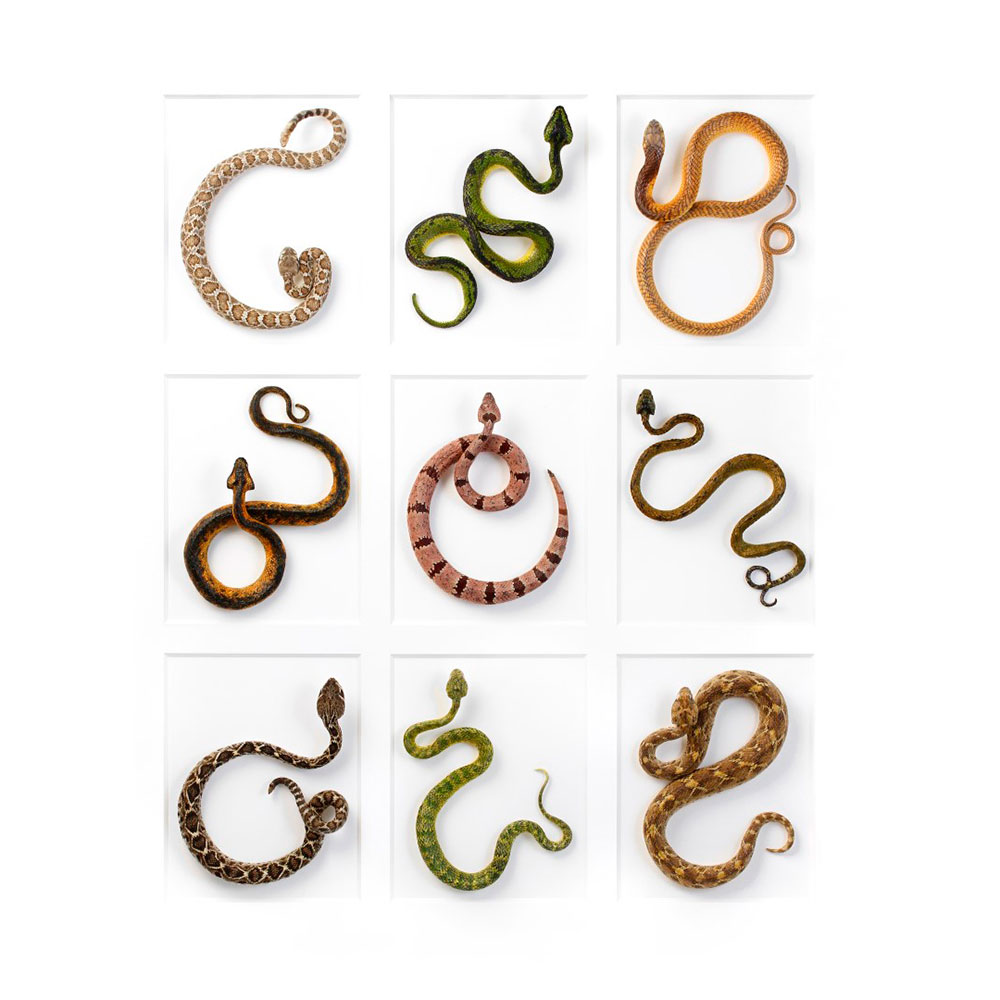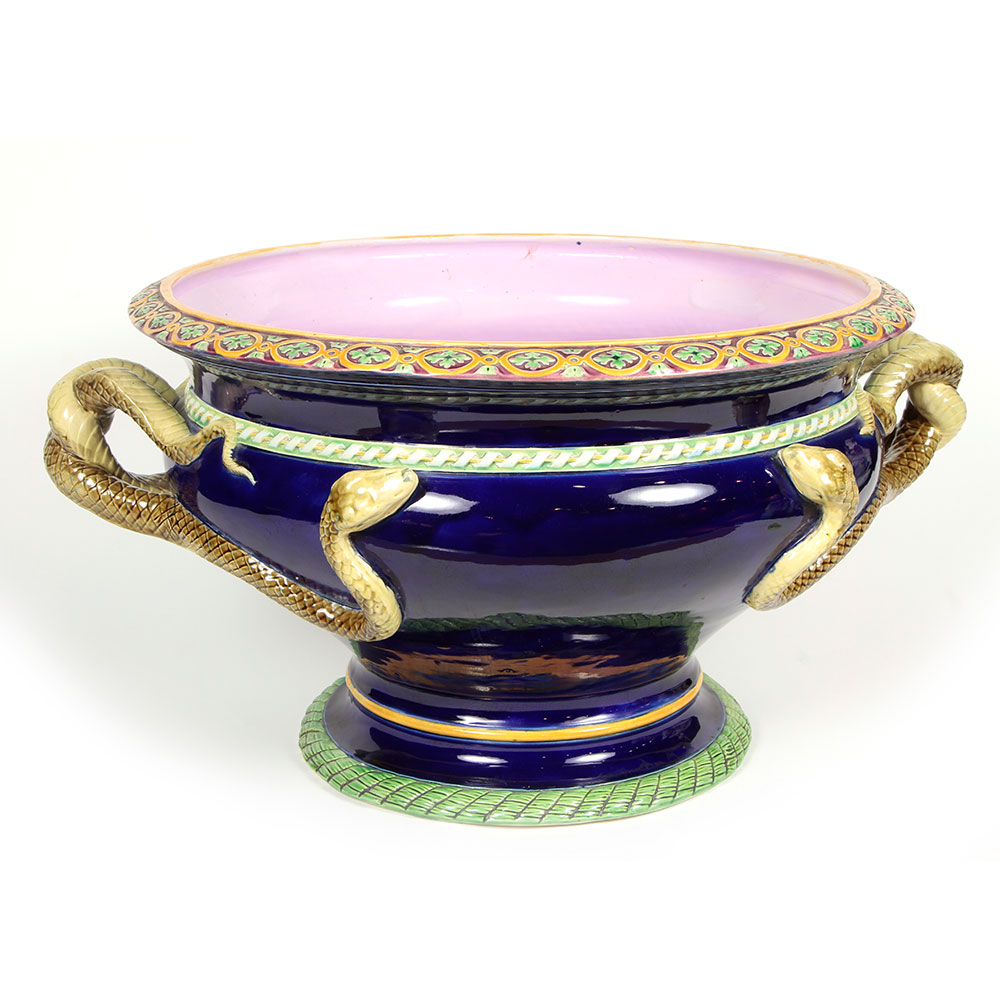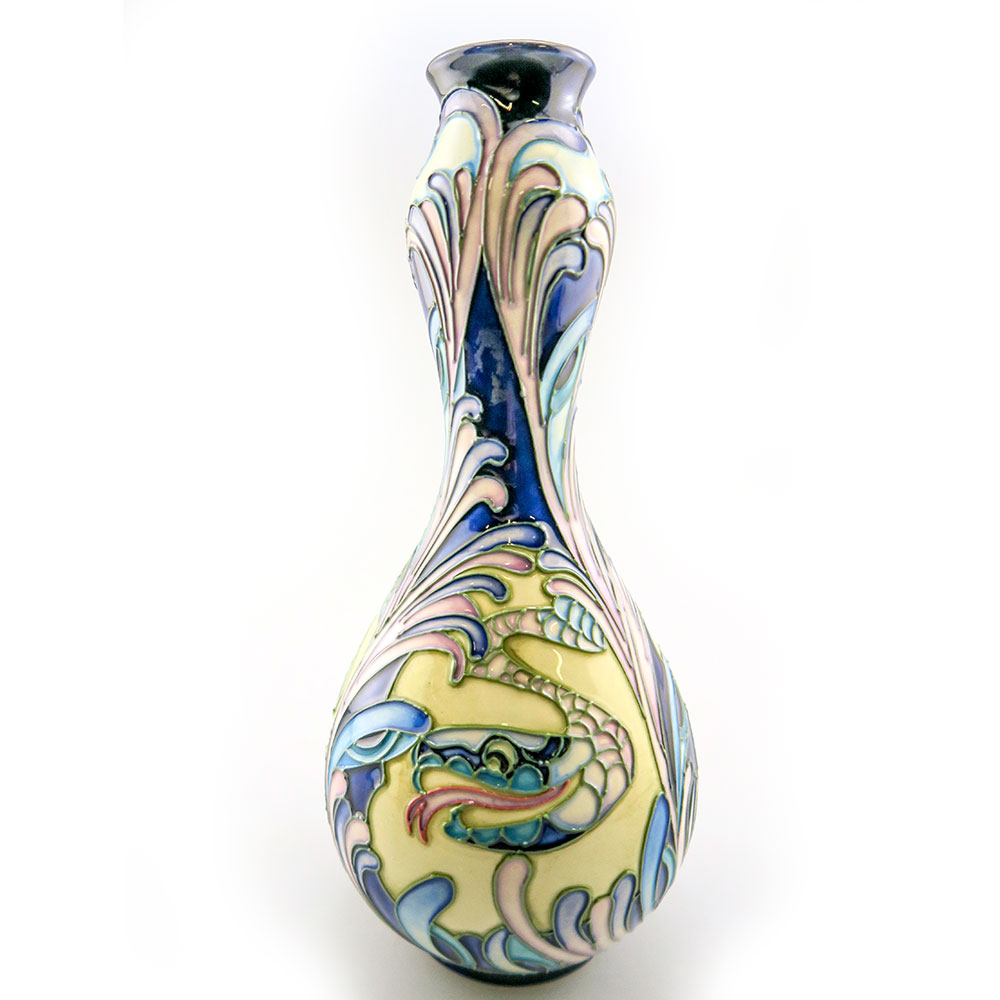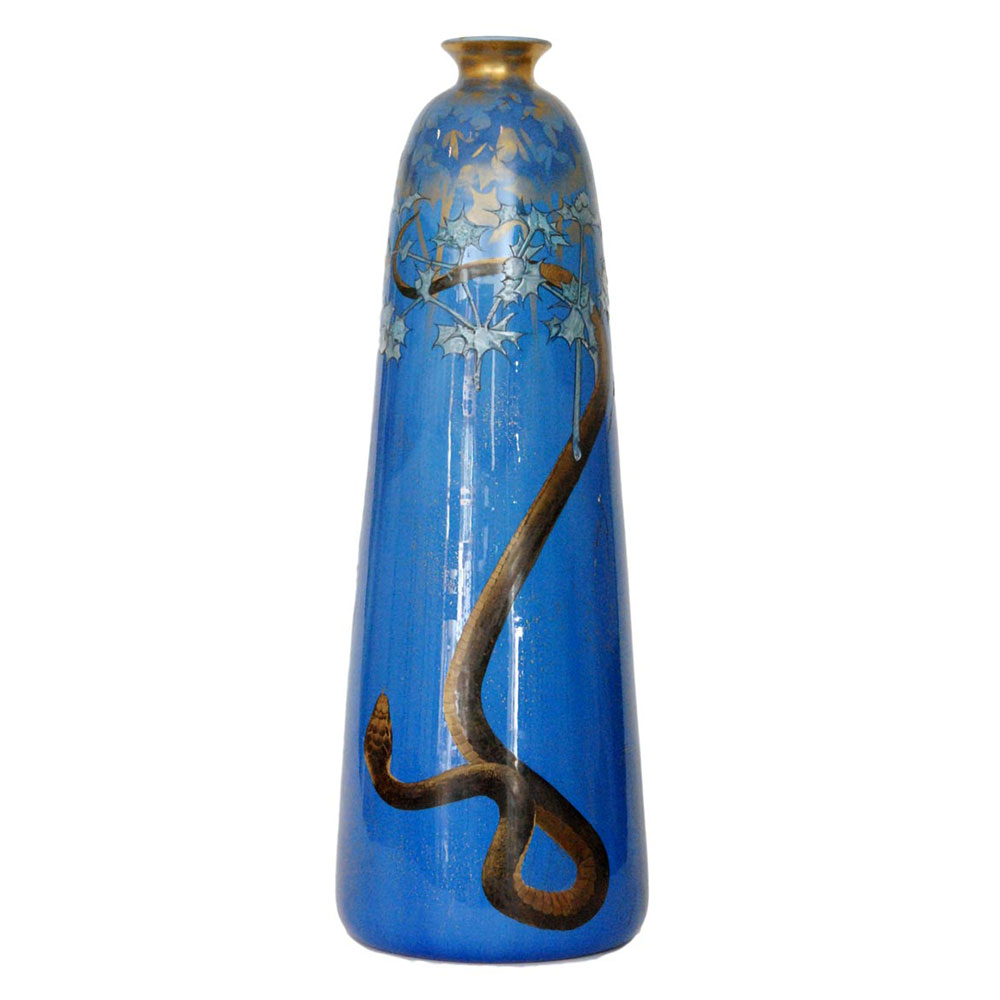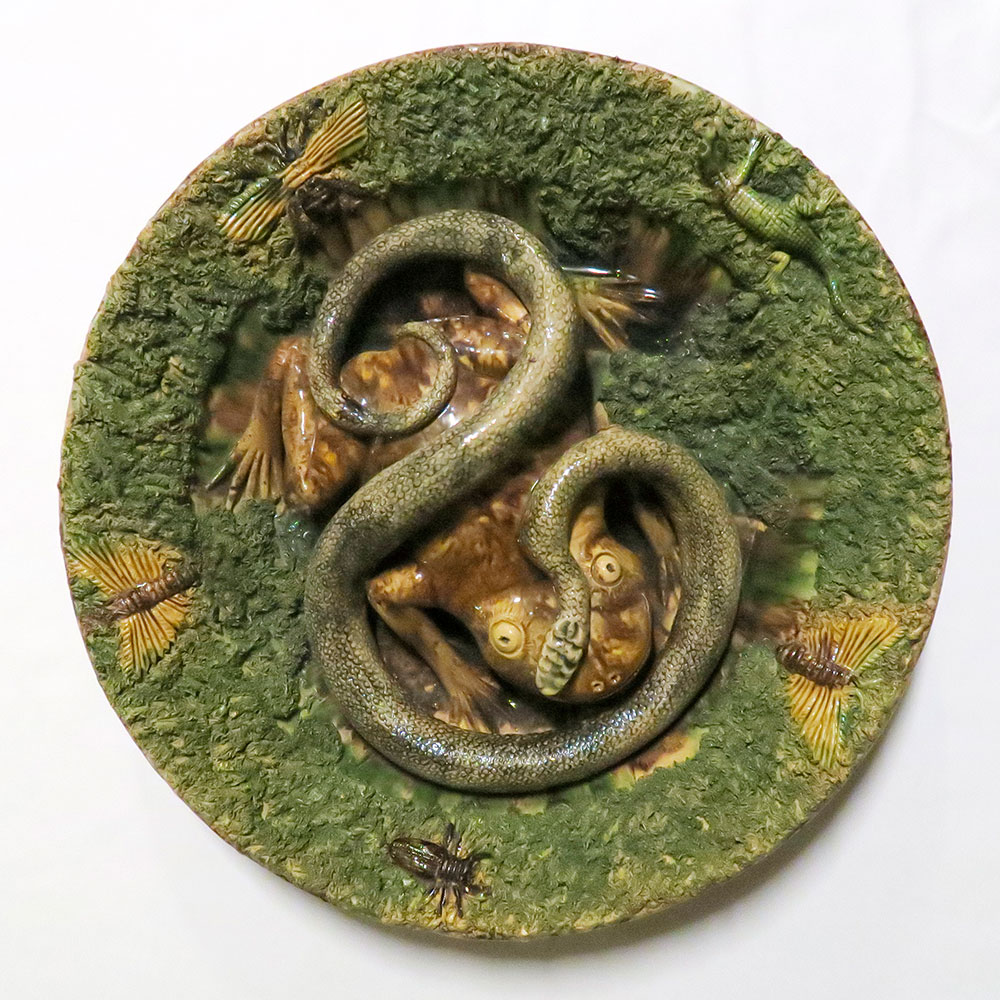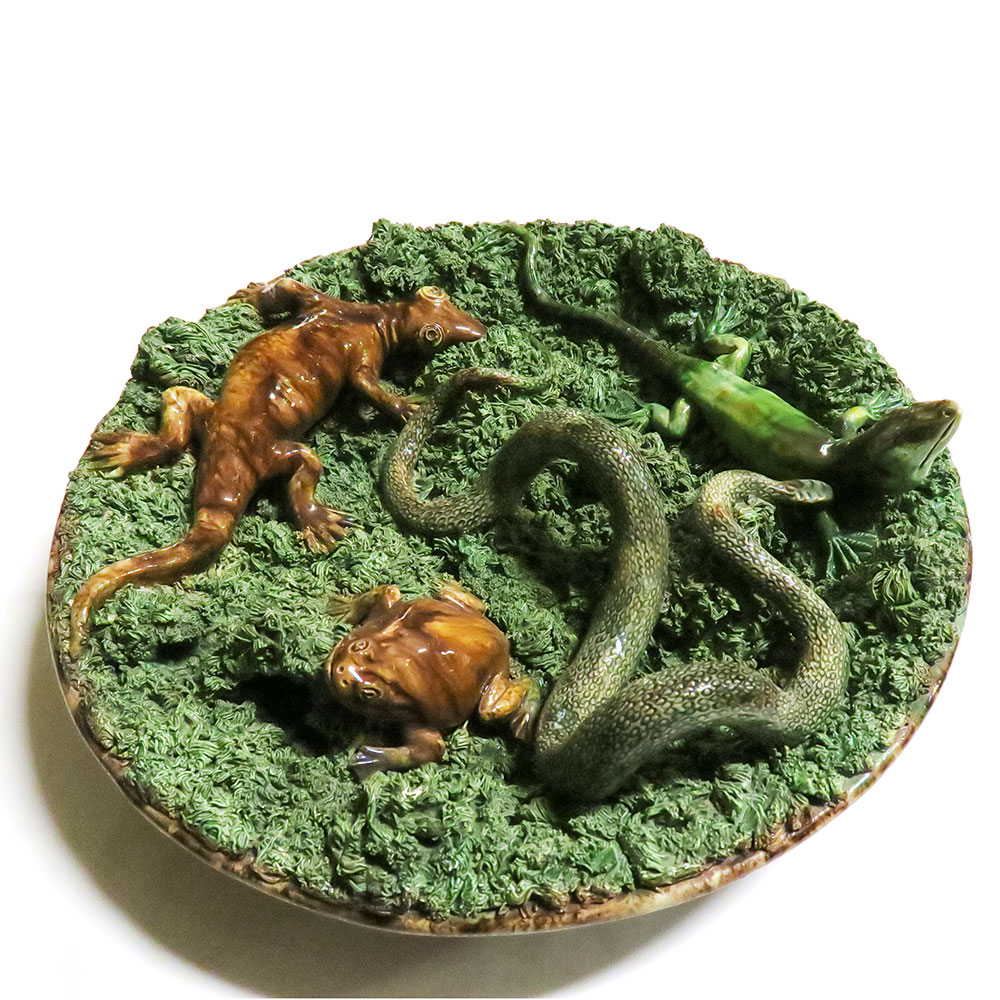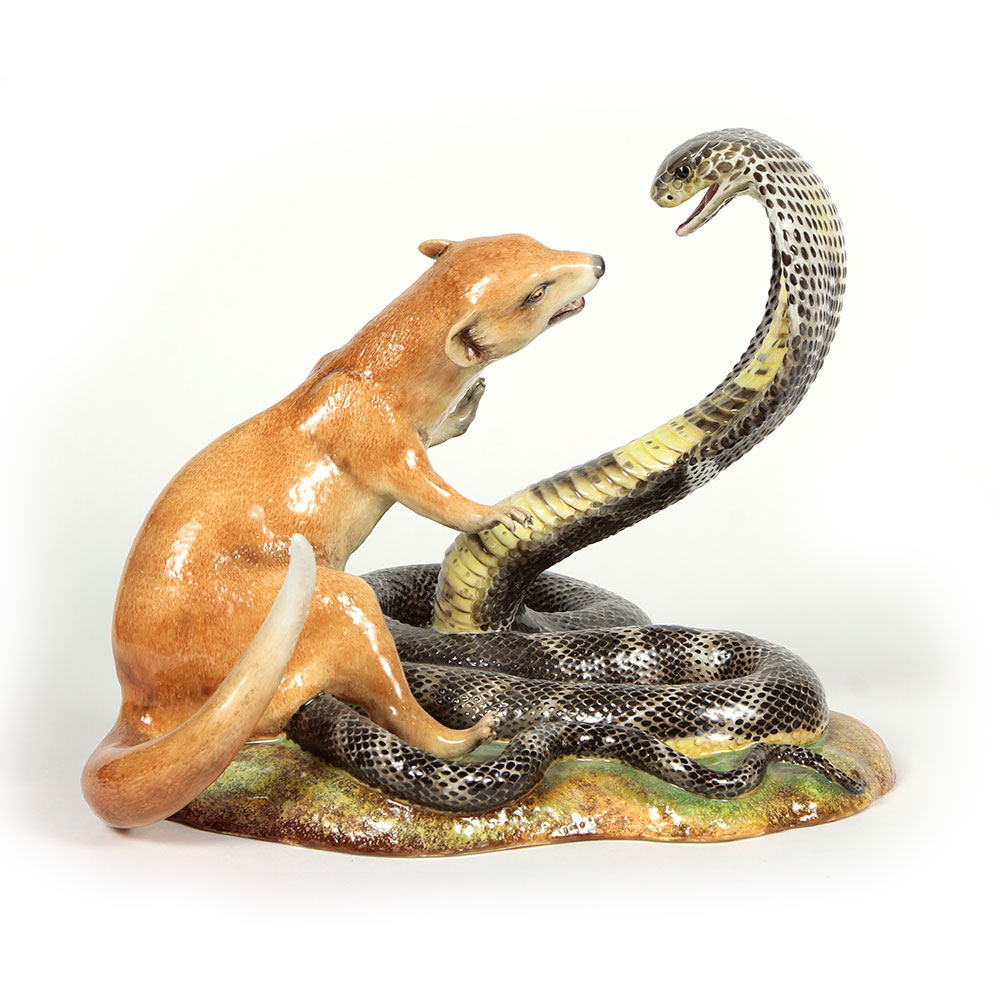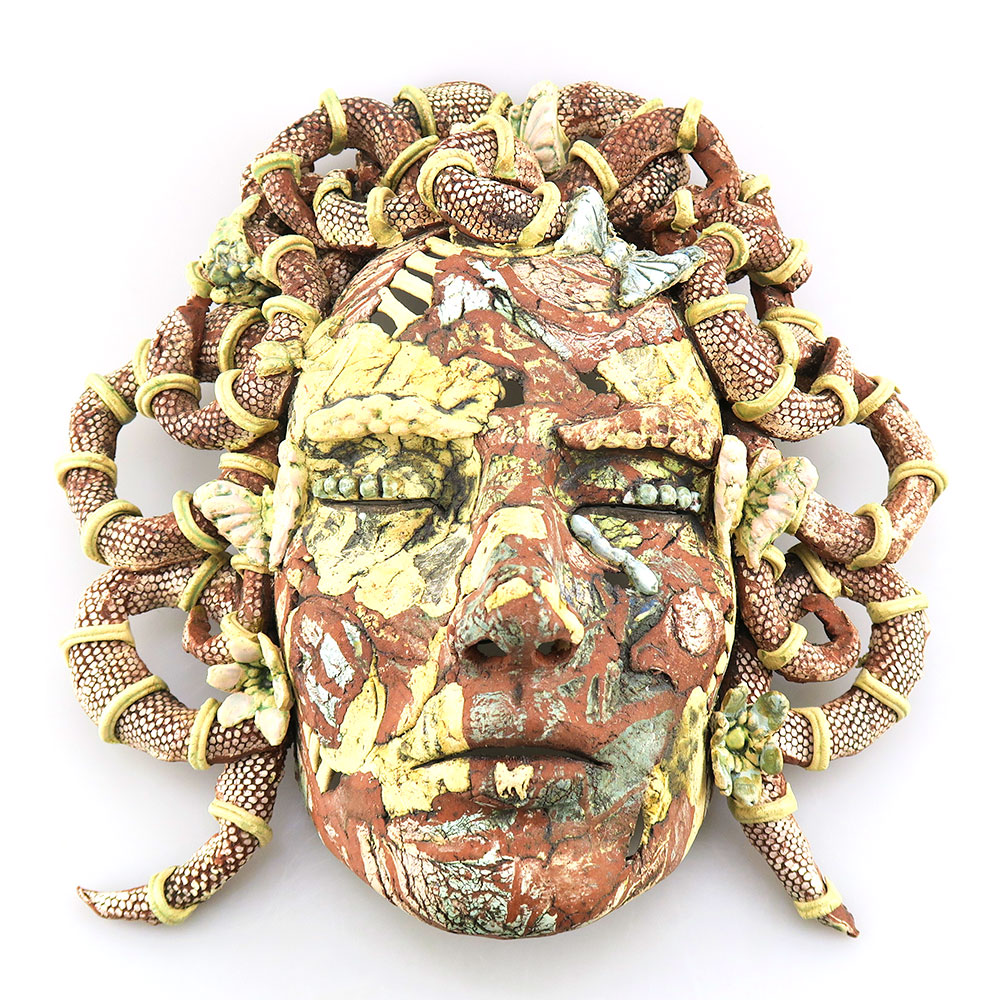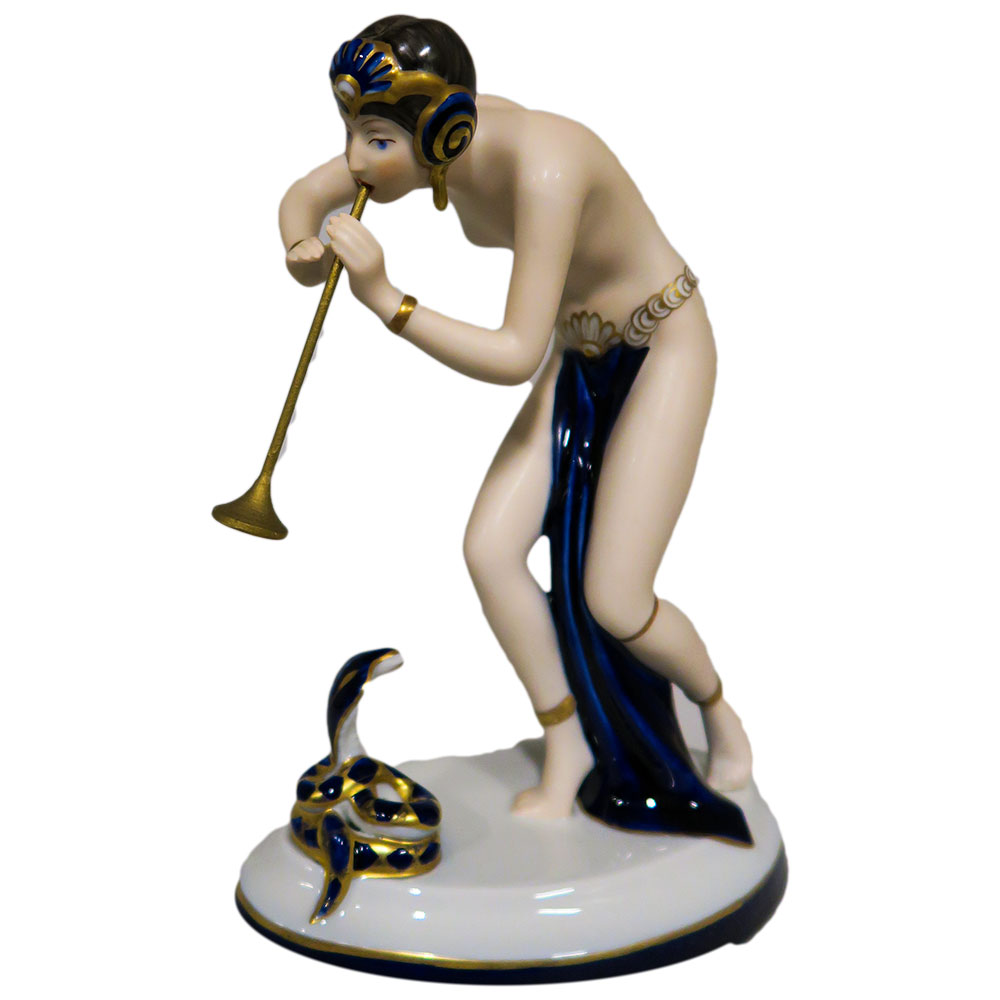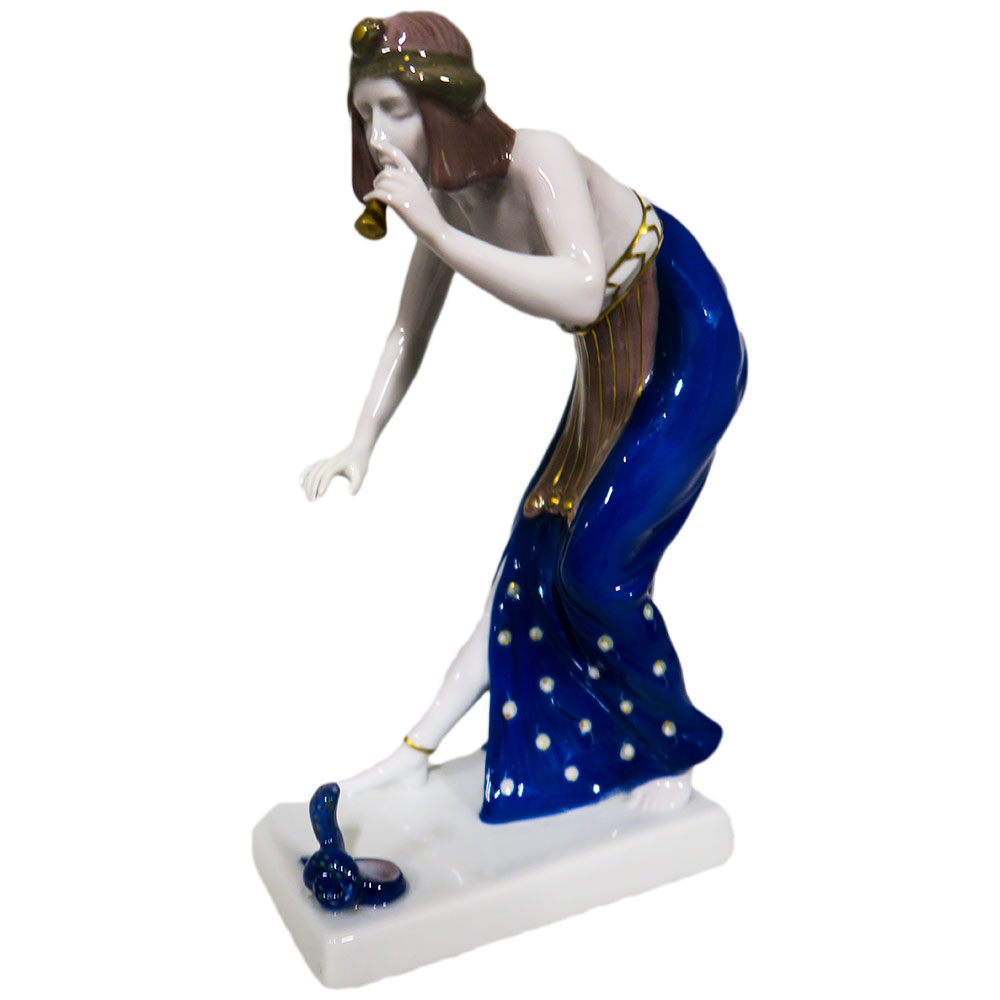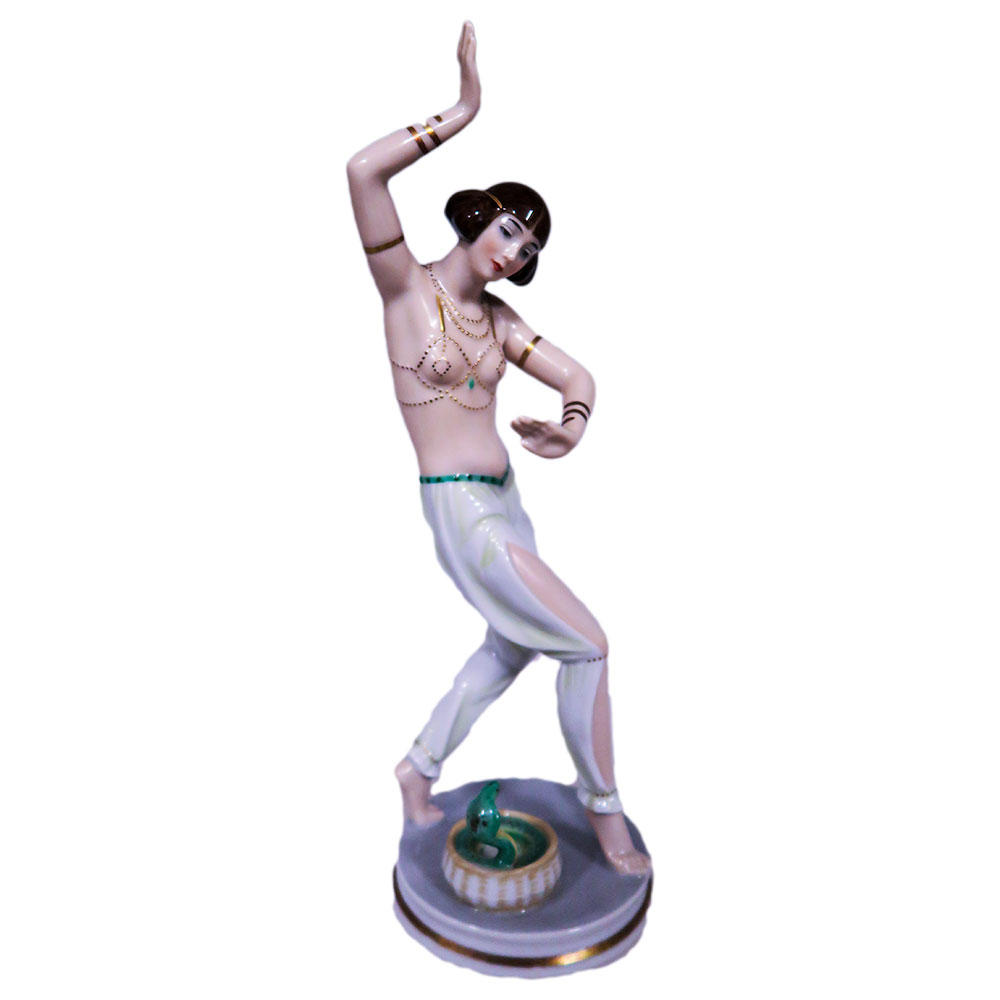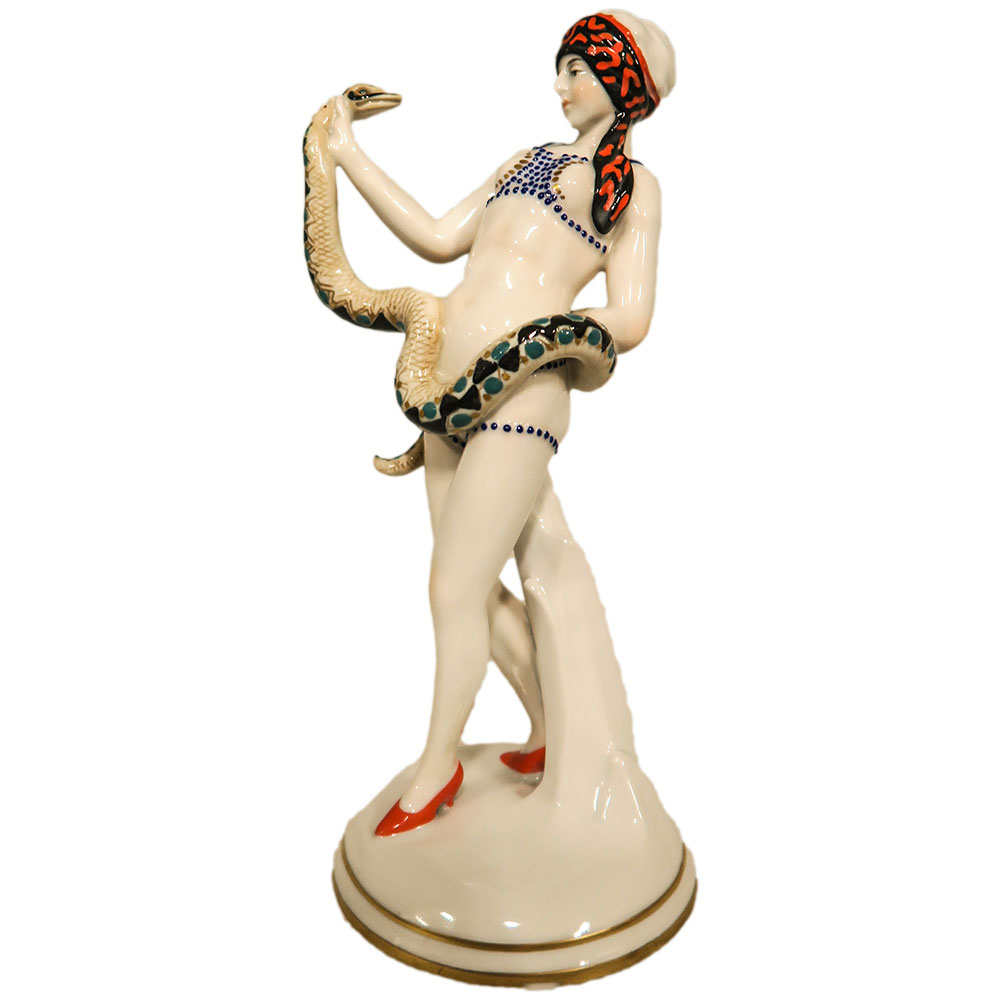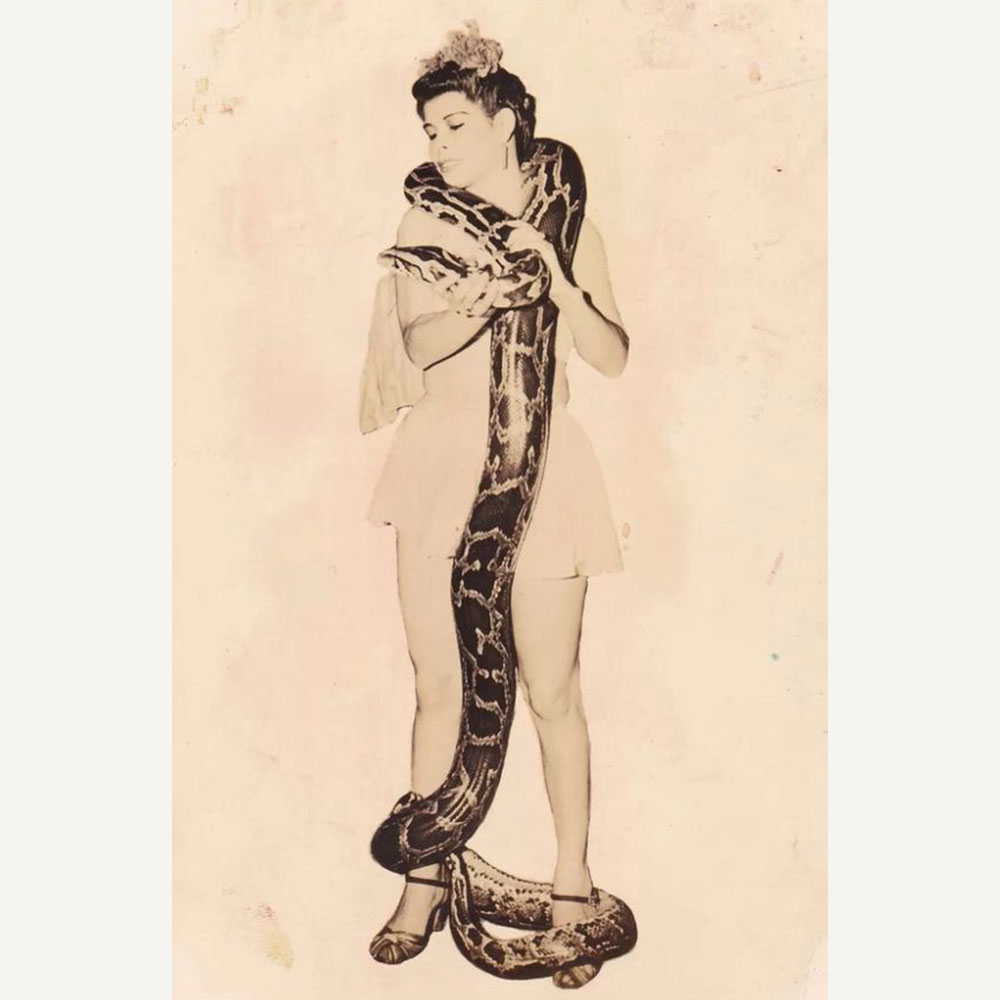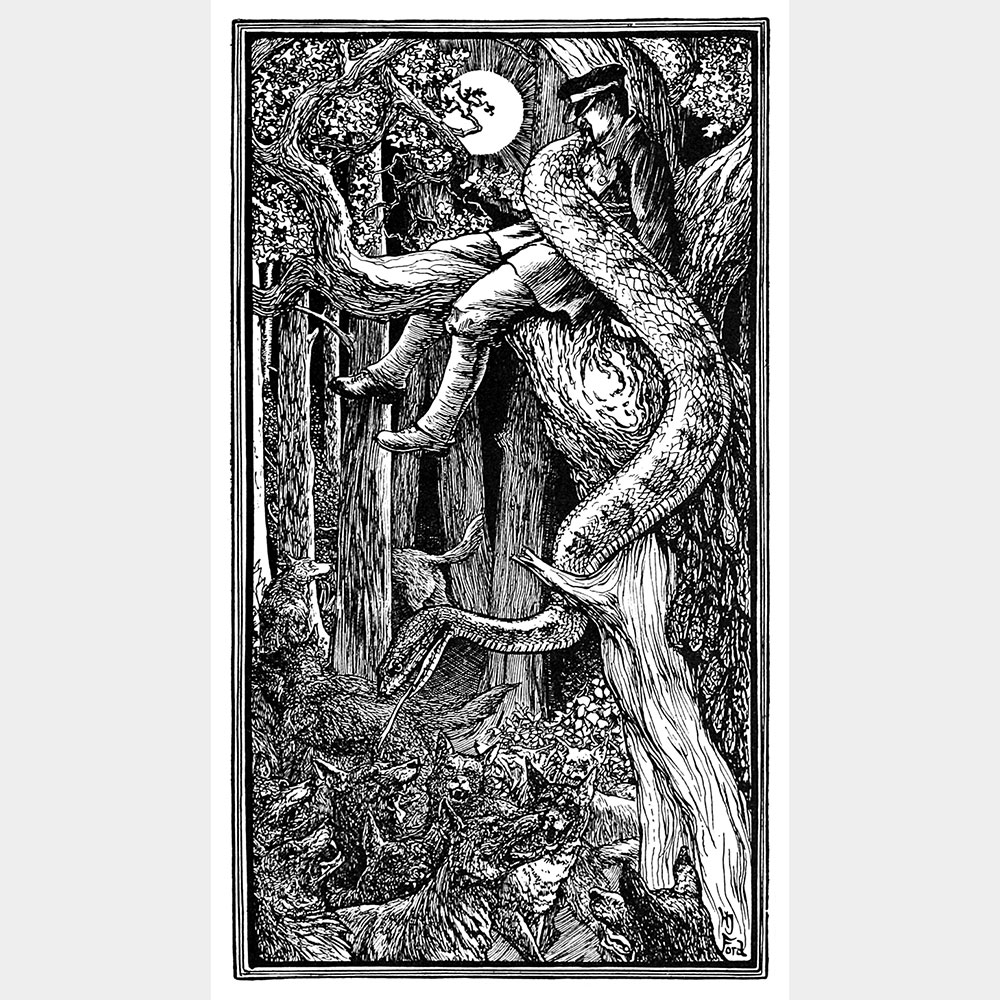When Louise Irvine was curating Biophilia ǀ The Elements at WMODA, she was surprised to find lots of serpentine designs in the ceramics collection to display with Christopher Marley’s snake specimens. For instance, the Wedgwood Fairyland Lustre Tree Serpent design depicts a snake coiling around a tree and shooting out its tongue at fledglings in the nest.
Serpentine Myths
Serpents have been central to the religions and myths of many cultures and the relationship between snakes and humans is complicated and often contradictory. They have the power to repel and to charm. In the bible, the fall of man from the Garden of Eden and eternal life is caused by a serpent, identified as Satan, who persuades Eve to eat the forbidden fruit.
In ancient Egypt, the Nile cobra adorned the crown of the pharaoh and was worshipped as one of the gods. Snakes were believed to have healing properties but were also used for sinister purposes, including the murder of adversaries. Cleopatra uses a serpent to commit suicide and she was also believed to have worn a python around her wrist as a living bracelet. The Herend porcelain factory in Hungary made a striking blanc de chine sculpture of Cleopatra with the asp that killed her.
In Greek mythology, snakes are related to the earth and were regarded as guardians of the underworld because they lived in cracks and holes in the ground. Worship of the earth deities, who looked after fertility of the land and the cycle of nature, included the cult of Demeter and her daughter Persephone who was abducted by Hades, God of the Underworld. Bernard Palissy, the 16th century scientist and potter, made a study of snakes and other ground dwelling reptiles and meticulously reproduced them in clay in their mossy habitats.
Healing and snakes were associated with Asclepius, the Classical god of medicine, whose snake-familiars would crawl across the bodies of sick people asleep at night in his shrines and lick them back to health. The rod of Asclepius, a snake-entwined staff, remains a symbol of medicine today. According to one Asclepius myth, Athena, the goddess of wisdom, gave him a vial of Gorgon’s blood which had magical properties. Medusa is the most famous of the Gorgons, who were vicious snake-women, with hair of living, venomous snakes and sharp fangs, whose gaze would turn flesh into stone. The terracotta mask of Medusa by British ceramic artist, Helen Nottage, brilliantly conjures up the hideousness of the Gorgons.
Snake Charming
India is often called the land of snakes and is steeped in traditions regarding snakes. Snake charmers used to be a familiar sight as road side entertainers. Seemingly the snake is charmed from his basket by the music from his flute-like instrument but in fact the snake, which has no external ears, responds to the movement of the flute not the sound. Other types of road-side shows in Pakistan feature snakes and mongooses having a mock fight. Snake charming was proscribed in India in 1972 to reduce animal cruelty.
Snake Dancing
Salammbo, the novel by Gustave Flaubert, was a massive best-seller in the late 19th century and inspired fascination for the ancient Roman colony of Carthage in North Africa. The title character Salaambo, is the daughter of the ruler, high priestess of the moon and the object of obsessive lust. The fate of this ethereal maiden captured the imagination of readers, particularly her sensual encounter with the snake which symbolizes the loss of her virginity. The novel shocked society but it made an impact on contemporary fashion in France inspiring Carthaginian costumes as well as several operas, plays, movies and exotic dances.
Snake dancing and snake charming became a feature of popular reviews and circus shows. Octavia was a star of Buffalo Bill’s Wild West show and appeared in a sensual form-fitting costume draped with snakes at time when long skirts were in fashion. European porcelain factories, notably Rosenthal, produced many exotic studies of scantily dressed or nude women charming or dancing with snakes during the liberated 1920s.
Related pages

